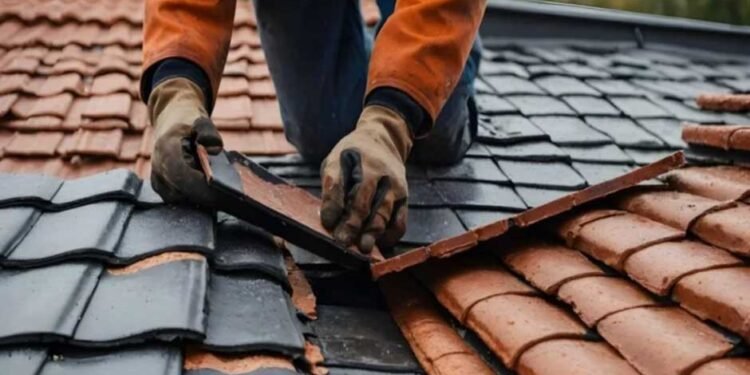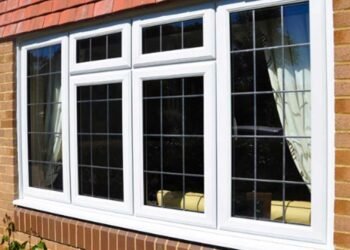Minnesota’s intense winters and stormy summers put roofs to the test, often leading to wear and tear that homeowners might overlook. Choosing a skilled roofing contractor in Minnesota ensures your roof is built to handle snow, ice, and high winds effectively. Learn how local expertise can safeguard your home from the region’s challenging weather conditions.
How Minnesota’s Harsh Winters Affect Roof Lifespan
Minnesota’s notorious winters can severely damage your roof, potentially shortening its lifespan and leading to costly repairs. Understanding these impacts is crucial for maintaining your property as a homeowner in this northern climate.
Freeze-Thaw Cycles
The frequent freeze-thaw cycles experienced in Minnesota can be particularly damaging. As temperatures fluctuate, snow and ice on your roof melt and refreeze, creating ice dams. These can force water under shingles, leading to leaks and structural damage. A skilled roofing contractor in Minnesota will recommend proper insulation and ventilation to mitigate this risk.
Snow Load Stress
Heavy snowfall accumulation puts immense pressure on your roof. This added weight can strain the structure, potentially causing sagging or even collapse in extreme cases. Regular snow removal and ensuring your roof is built to withstand local snow load requirements are essential preventive measures.
Wind and Storm Damage
Harsh winter storms often bring strong winds, which can lift and damage shingles. Additionally, falling branches from ice-laden trees pose a significant threat. Regular tree trimming and choosing impact-resistant roofing materials can help protect against these hazards.
The Impact of Extreme Heat and Humidity on Roofing in Northern States
While northern climates are often associated with harsh winters, the summer months can be equally challenging for your roof. Extreme heat and humidity can significantly impact roofing materials, particularly in states like Minnesota, where temperature fluctuations are dramatic.
Heat-Induced Expansion and Contraction
When temperatures soar, roofing materials expand. As they cool, they contract. This constant cycle can lead to warping, cracking, and loosening of shingles over time. This effect is amplified in northern states, where winter temperatures plummet, and summer heat can be intense.
Humidity’s Hidden Damage
High humidity levels, common in Minnesota summers, can trap moisture beneath shingles. This creates an ideal environment for mold and mildew growth, which can deteriorate roofing materials from the inside out. Additionally, trapped moisture can lead to wood rot in the roof deck, compromising the entire structure.
UV Radiation Effects
Intense summer sun in northern states can damage roofing materials with UV rays, leading to premature aging and degradation. This is particularly true for asphalt shingles, which can become brittle and lose their protective granules.
Maintaining Your Roof: Best Practices for Minnesota Homeowners
Regular Inspections and Maintenance
Maintaining your roof is crucial for its longevity as a homeowner in Minnesota. Regular inspections, especially after severe weather events, can help identify potential issues before they become major problems. You should conduct a visual inspection at least twice a year, ideally in spring and fall. Look for signs of damage, such as missing or curled shingles, damaged flashing, or excessive granule loss in gutters.
Professional Assessments
While DIY inspections are important, nothing beats the expertise of a professional roofing contractor in Minnesota. These experts can spot subtle signs of damage that untrained eyes might miss. Schedule a professional inspection annually, particularly if your roof is over 10 years old or has recently endured severe weather conditions.
Proactive Repairs and Upgrades
Don’t wait for leaks to appear before addressing roof issues. Promptly repair damaged shingles, fix loose flashing, and clear debris from gutters and downspouts. Consider upgrading to impact-resistant shingles or installing additional insulation to improve your roof’s resilience against Minnesota’s harsh winters and summer storms.
Snow and Ice Management
Proper snow and ice management is crucial in Minnesota’s snowy climate. Excessive snow accumulation can stress your roof structure, while ice dams can lead to water infiltration. Use a roof rake to safely remove snow after heavy snowfalls, and consider installing heat cables along the roof’s edge to prevent ice dam formation.
Final Thoughts
As you consider the longevity of your roof in a northern climate, remember that extreme weather poses significant challenges. From heavy snow loads to freeze-thaw cycles, your roofing system faces constant stress. Understanding these impacts and taking proactive measures can extend your roof’s lifespan and protect your investment.












